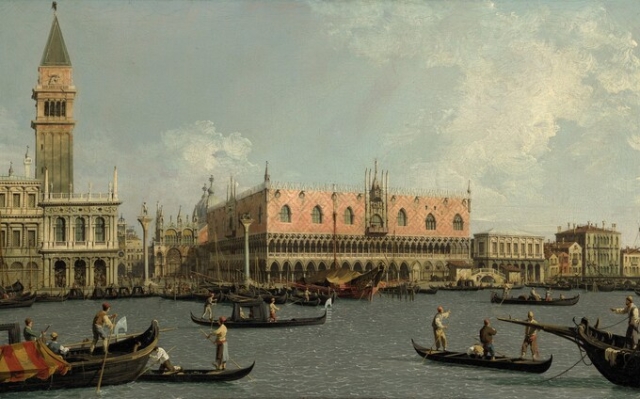 «Molo with Piazzetta and Doge's Palace from Bacino», one of two works by Canaletto for sale
«Molo with Piazzetta and Doge's Palace from Bacino», one of two works by Canaletto for sale
A pair of previously unseen Venetian masterpieces Giovanni Antonio Canal's titanium veduta is expected to sell for £12 million when it goes to auction in London.
The paintings are titled: Venice: Estuary of the Grand Canal from the East; and «Molo» with the Piazzetta and the Doge's Palace from Bacino — will be shown to the public for the first time in New York on Thursday as part of Christie's world tour of works.
< p>Painted by the artist best known as Canaletto , circa 1734, they are offered for sale from a private collection in Britain, and after exhibitions in New York and Paris will be sold in London this Christmas.
“Both paintings are classic views which were inevitably in great demand by Canaletto’s patrons,” said Francis Russell, deputy chairman of Christie’s UK.
'Venice: the mouth of the Grand Canal from the east'
“He had a talent for recalibrating his compositions, subtly varying angles of view, and invariably completely redefining both his boats and his figures. These masterpieces, previously unknown to scholars, exemplify Canaletto's work at the peak of his career.»
Their scale is comparable to the magnificent sequence of views of the Grand Canal now in the Royal Collection, and the famous series in Woburn Abbey, Christie's reports.
Like most of Canaletto's works of the period, these two paintings were almost certainly painted for an English patron for whom Joseph Smith, a merchant, collector, and later consul in Venice, acted in as agent.
Records survive of payments made by John Russell, fourth Duke of Bedford, between 1734 and 1736 to Smith's brother, the London agent John Smith, for the famous Canaletto series at Woburn.
Charles Beddington, a dealer and agent of Old Master paintings, suggested that these paintings were part of a set of four canvases commissioned in 1733 by Elizabeth Countess of Essex, sister of the Duke of Bedford.
Her husband, William Capel, 3rd Earl Essex, was appointed British ambassador to Turin in 1732.






















































Свежие комментарии